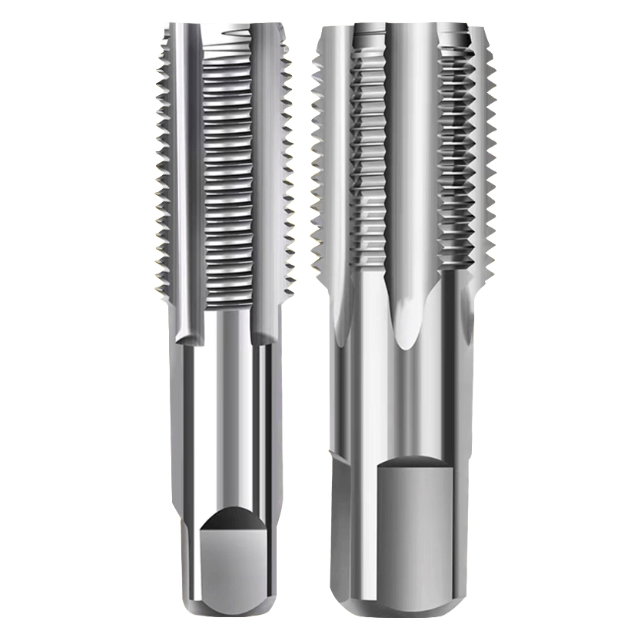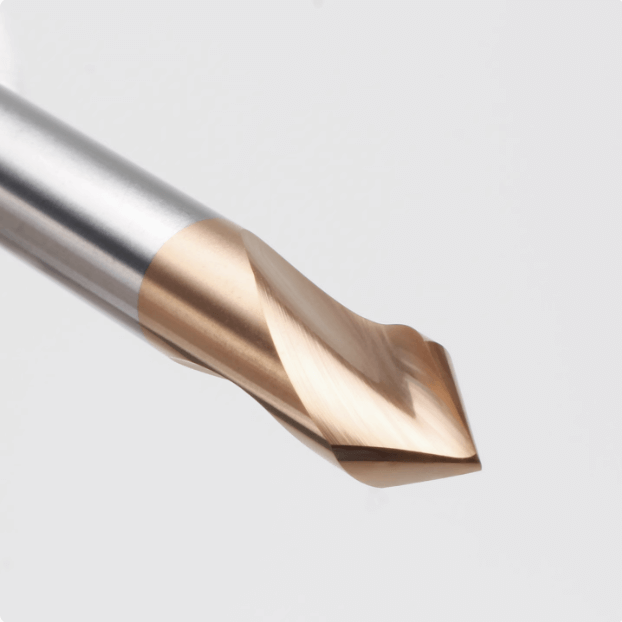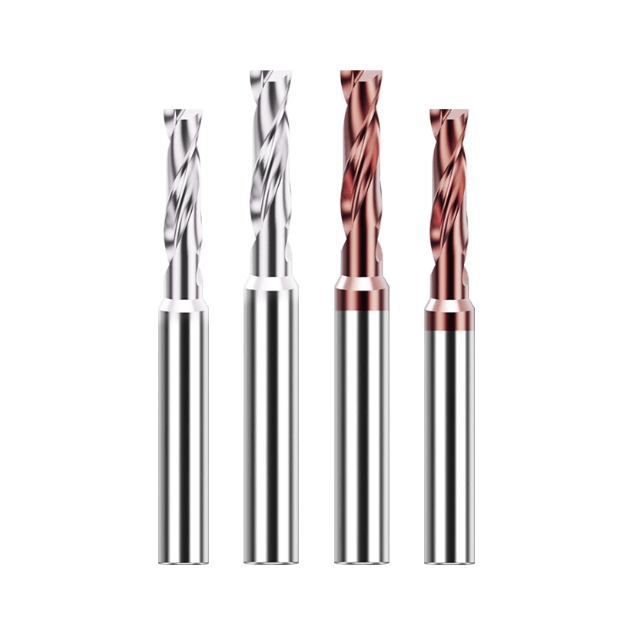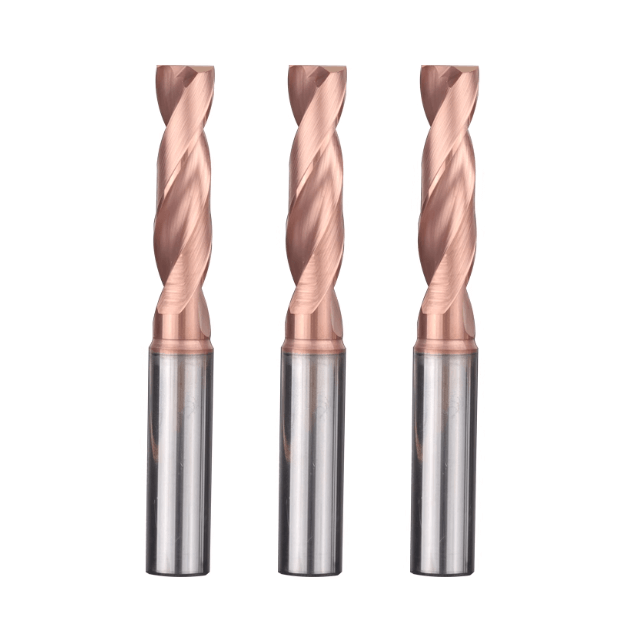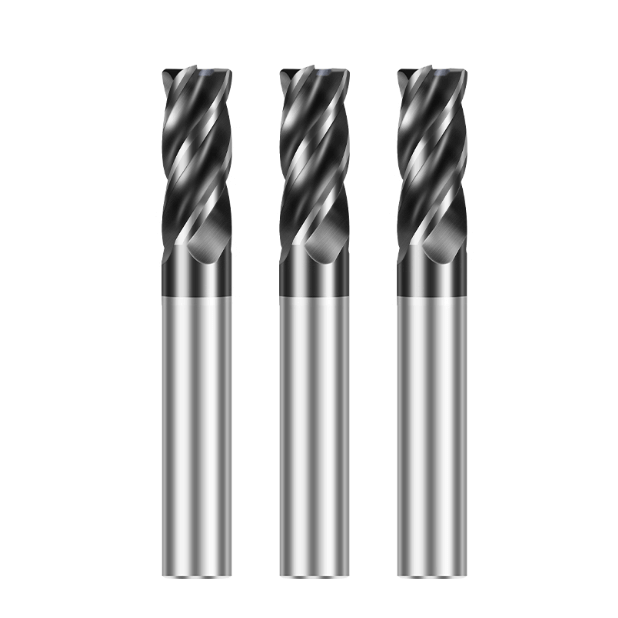Tap breakage is one of the most common and challenging issues in CNC thread machining. Whether in mass production or high-precision part machining, tap stability directly affects thread quality, production efficiency, and tooling costs. When a tap breaks during machining, it can result in scrapped workpieces, damage to the spindle or fixture, and, in severe cases, downtime on the production line.
The causes of tap breakage are often multifaceted. They include improper tapping parameters, poor chip evacuation, insufficient cooling, inappropriate tap material selection, and clamping coaxiality errors. Hard-to-machine materials such as hardened steel or stainless steel increase cutting forces, making thread tap failure more likely. Therefore, selecting the right tap type and implementing proper process controls are critical to preventing breakage.
In practice, engineers typically choose between HSS and carbide thread taps based on the material and production requirements. High-speed steel (HSS) taps offer excellent toughness, making them suitable for machining ordinary steel and aluminum alloys. Carbide thread taps for hardened steel provide superior wear resistance and rigidity, making them ideal for high-hardness materials and continuous batch production. Using high-precision thread taps for CNC machines combined with optimized tapping paths, cutting fluid systems, and precise clamping methods can significantly enhance threading reliability and consistency.
To achieve high-efficiency and high-precision threading, manufacturers increasingly rely on precision thread cutting tools and high-performance thread taps for manufacturing. These tools incorporate advanced geometry and coating technologies to maintain sharp cutting edges, reduce cutting resistance, and improve heat dissipation, thereby extending tool life and minimizing the risk of breakage.
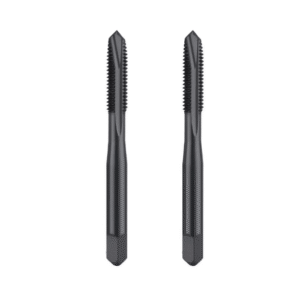
Analysis of Common Causes of Tap Breakage
Tap breakage usually results from multiple interacting factors rather than a single issue. In CNC threading, thread taps face continuous cutting forces, frictional heat, and complex torque fluctuations. Even minor deviations in parameters or equipment can amplify these effects, especially in automated, high-speed operations using thread taps for CNC machines.
Common causes include excessive cutting forces, poor chip evacuation leading to jamming, uneven force distribution due to coaxiality errors, and inadequate cooling or lubrication. These issues affect tool life, thread accuracy, and surface quality. Understanding these mechanisms allows engineers to make targeted optimizations to prevent tap breakage.
Excessive Cutting Force and Feed Mismatch
If spindle speed and feed rate are not properly coordinated, a thread tap experiences excessive axial forces and torque, increasing breakage risk. In CNC machining, the feed rate must align precisely with the thread pitch; otherwise, thread snagging or pulling may occur.
Different materials have varying cutting resistance. Hard-to-machine materials such as high-hardness alloy steel or stainless steel can overload conventional HSS taps if cutting parameters are set manually based on experience. The correct approach is to adjust feed rate and cutting speed according to material properties, hole depth, and tap diameter. Using high-performance taps with coatings or internal coolant channels ensures a stable and smooth tapping process.
Poor Chip Evacuation and Spiral Flutes
Chip evacuation is critical, especially in blind-hole tapping. Accumulated chips in spiral flutes or at the hole bottom can cause severe reverse torque and breakage.
Using spiral-fluted taps or taps with the proper helix angle improves chip removal. For deep or blind holes, thread taps for CNC machines with internal coolant channels flush chips efficiently. Regular chip clearing and stable coolant flow are essential for preventing tap failure.
Coaxiality and Hole Bottom Accuracy Errors
Tapping accuracy depends on the geometric precision of the hole and equipment coaxiality. Misaligned hole bottoms, spindle runout, or improperly installed fixtures cause uneven forces on the tap, leading to uneven wear or breakage.
Spindle coaxiality and tool holder accuracy should be regularly checked. High-precision thread tap holders reduce vibration and runout. Controlling bottom hole diameter, perpendicularity, and surface finish is critical to maintaining thread quality and tool life.
Inadequate Cooling and Lubrication
High temperatures and friction in the cutting zone accelerate tap wear and breakage. Insufficient coolant flow or poor lubrication can soften the cutting edge, reducing torsional strength.
Selecting the right cutting fluid is essential. Oil-based fluids suit stainless steel or titanium alloys, while water-soluble coolants are better for aluminum and copper. High-performance thread taps with internal coolant channels maintain stable temperatures, extending tool life and improving thread quality.
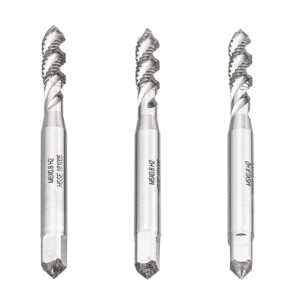
Selecting the Right Tap Material and Construction
In CNC thread machining, the material and construction of a tap are crucial to both thread quality and tool life. The combination of material, coating, and geometry directly determines the cutting performance and durability of the thread tap under specific conditions. Improper tool selection often leads to breakage, reduced thread accuracy, and low machining efficiency.
When comparing HSS vs carbide thread taps, HSS taps are widely used for medium- and low-hardness materials, such as carbon steel and aluminum alloys, due to their excellent toughness and cost-effectiveness. Carbide thread taps, by contrast, provide superior wear resistance and rigidity, making them ideal for high-strength materials and high-volume CNC threading. Tap structure—straight flute, spiral flute, or forming tap—also significantly affects chip evacuation, tapping torque, and thread surface quality.
Therefore, engineers should consider the workpiece material, hole type (through or blind), cooling method, and production volume when selecting a tap. Combining the right material with the correct structure ensures a stable, efficient, and long-lasting tapping process.
Advantages and Limitations of HSS Taps
HSS taps are common in industrial production. Their toughness and impact resistance allow stable tapping of medium- and low-hardness materials, including carbon steel, aluminum alloys, and brass. Their sharp cutting edges absorb machining impacts effectively, making them suitable for medium- and low-speed operations. HSS taps are also cost-effective and easy to regrind, making them suitable for small- to medium-volume, high-variety production.
However, HSS taps wear quickly and may chip or break in high-hardness or high-strength materials such as hardened steel or stainless steel. Limited hot hardness and wear resistance cause the cutting edge to soften under high temperature and load. For CNC mass production that requires long tool life and high efficiency, HSS taps are generally not recommended.
High-Performance Advantages of Carbide Taps
Carbide taps offer high hardness, high hot hardness, and excellent wear resistance, maintaining sharp edges even under high temperatures. They are particularly suitable for continuous, high-speed, high-precision CNC threading of high-strength steels, heat-resistant alloys, and stainless steel.
Compared to HSS, carbide taps provide greater rigidity and reduced cutting resistance, maintaining consistent thread quality in deep holes or high-speed applications. Although more expensive initially, their longer lifespan and reduced tool changes lower overall production costs. Carbide taps are now the standard choice for high-performance thread tapping.
Structure Selection: Straight Flute vs Spiral Flute vs Forming Tap
The tap’s flute design determines chip evacuation and application suitability:
-
Straight Flute Taps: Simple design; chips follow the cutting direction. Ideal for through holes and short-chipping materials like cast iron.
-
Spiral Flute Taps: Large helix angle directs chips out of the hole. Well-suited for blind holes and ductile metals such as aluminum or stainless steel.
-
Forming Taps: Produce threads by plastic deformation without cutting chips. Ideal for ductile materials, providing smoother threads and stronger profiles.
Selecting the right structure requires considering hole shape, material ductility, and cutting depth. Spiral-fluted taps reduce chip blockage in high-precision CNC applications, while forming taps improve efficiency and thread strength in high-volume aluminum machining.
When to Choose Carbide Thread Taps for Hardened Steel
For materials above 45 HRC, such as hardened steel, tool steel, and die steel, conventional HSS taps are prone to chipping or breakage under high cutting loads. In these cases, carbide thread taps for hardened steel provide reliable performance.
Carbide taps maintain sharp edges and structural stability at high temperatures, reducing tapping torque and wear. Coatings such as TiAlN or AlCrN, combined with internal coolant channels, improve heat dissipation and chip evacuation.
For example, when machining H13 mold steel or hardened mold bases, using carbide taps with internal coolant can improve thread accuracy and extend tool life by 2–3 times. This makes them ideal for high-end applications requiring precision threading and high-performance thread taps for manufacturing.
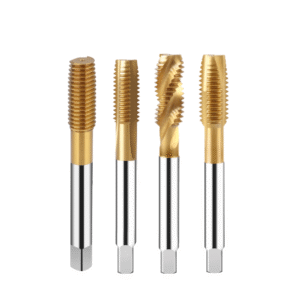
Optimizing CNC Tapping Parameters and Process Settings
In CNC thread machining, tap breakage is closely linked not only to tool material and construction but also to machining parameters and process settings. Properly optimizing tapping parameters can reduce cutting force fluctuations, minimize chip accumulation, extend tap life, and improve thread accuracy and surface quality. For high-precision components or high-volume production, using thread taps for CNC machines with optimized parameters is key to ensuring stable and efficient tapping.
Optimizing tapping parameters focuses on several objectives: matching spindle speed with feed rate to maintain hole bottom accuracy and surface finish, using a high-precision clamping system, and designing retraction, cutting depth, and cooling strategies within the CNC program. Combined with precision thread cutting tools, these strategies enable efficient, continuous, and stable thread machining while minimizing tap breakage.
Matching Spindle Speed and Feed
Spindle speed and feed must align with tap pitch, hole depth, and material cutting resistance. Excessive speed can overheat the tap, reducing hardness, while excessive feed can create overtorque or thread overcutting.
In practice, feed rates and spindle speeds can be calculated based on material hardness, tap diameter, and thread specifications. For deep holes or high-hardness steel, reduce speed and increase feed to balance cutting forces. Thread taps with internal coolant channels for CNC machines further enhance heat dissipation and chip evacuation, extending tool life and maintaining thread quality.
Threaded Hole Bottom Accuracy and Surface Treatment
The accuracy, perpendicularity, and surface finish of the hole bottom directly affect cutting loads and tool life. Undersized holes or rough surfaces increase cutting resistance, accelerating wear or causing breakage.
Ensure the bottom hole diameter and depth are strictly controlled. Chamfer or deburr hole edges and smooth the walls as necessary. Using high-precision thread cutting tools ensures smooth tapping, reduces force fluctuations, and improves thread consistency.
High-Precision Taps with Concentric Clamping
Tool concentricity and clamping accuracy are critical for tapping stability. High-precision taps combined with concentric clamping systems reduce vibration and runout, evenly distribute cutting forces, and lower breakage risk.
For batch or deep-hole machining, precision chucks and toolholders enhance thread quality and extend tap life. Concentric clamping ensures the tool aligns with the spindle axis, preventing uneven wear caused by runout.
Tapping Path and CNC Program Optimization
CNC program optimization is crucial for extending tap life. Properly designing tool retraction, cutting depth, and spiral tapping strategies reduces chip accumulation and sudden load impact.
Cooling delays or intermittent tapping cycles can control cutting zone temperatures. Optimized paths, combined with high-precision thread taps, improve threading efficiency and minimize breakage and surface defects. Long-tail keywords: CNC tapping cycle optimization, deep-hole thread tapping control, automated thread tapping efficiency.
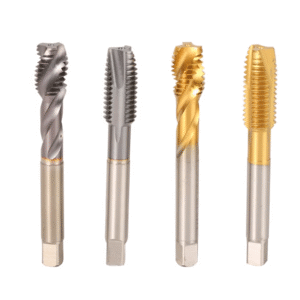
Improving Tap Durability and Preventing Breakage
In high-efficiency, high-precision CNC thread machining, basic tools and traditional processes are often insufficient to prevent tap breakage. Selecting high-performance taps, optimizing coatings, ensuring proper cooling, performing regular maintenance, and managing tool life are essential to improving durability, minimizing production downtime, and ensuring stable, consistent threading. In mass production and high-end manufacturing, high-performance thread taps are key to achieving high productivity and thread quality.
This section analyzes preventative measures from four perspectives: tool selection, cooling and lubrication, wear management, and mass production application. Engineers can use these strategies to optimize tapping efficiency and extend tap life in real-world production.
Selecting High-Performance Taps and Advanced Coatings
High-performance taps typically use carbide or high-speed steel substrates with advanced coatings like TiN, TiAlN, or AlCrN. These coatings improve wear resistance, hot hardness, and surface smoothness, reducing friction and heat buildup during machining.
-
Stainless steel or hardened steel: TiAlN-coated taps withstand high temperatures, improve chip evacuation, and reduce breakage.
-
Aluminum alloys or copper: TiN coatings reduce sticking and maintain sharp cutting edges.
Choosing the appropriate high-performance tap for the material ensures efficient and stable machining with precision thread cutting tools.
Optimizing Cutting Fluids and Cooling Systems for CNC Thread Tapping
Cutting fluids and cooling directly impact tap wear and breakage. Traditional external coolant may be insufficient for deep or blind holes. Internal coolant taps or mist systems deliver fluid directly to the cutting edge, lowering temperature, reducing friction, and minimizing torque fluctuations.
-
Material-specific fluids: Water-soluble coolants for aluminum; high-lubricity oil-based fluids for hardened steel or high-strength alloys.
-
Proper cooling, combined with high-performance taps, significantly improves tapping efficiency and thread accuracy.
Regular Inspection and Replacement Cycle Management
Even high-performance taps require structured monitoring. Excessive wear increases cutting forces, reduces thread accuracy, and risks breakage.
-
Regularly inspect cutting edges, coating condition, and thread quality.
-
Establish replacement cycles based on batch size, material hardness, and machining depth.
-
For automated production lines, record usage time and processed holes to standardize management.
Tap Life Control Strategies in Mass Production
In high-volume, high-precision production, tool life impacts both costs and output quality. Optimizing tool selection, coating type, cooling method, and CNC parameters maximizes tap life.
-
Example: Automotive or aerospace production using internally cooled carbide taps with TiAlN coatings, high-precision clamping, and optimized CNC programs reduces breakage and downtime.
-
Life data analysis supports continuous process optimization, ensuring stable, long-term use of high-performance thread taps.
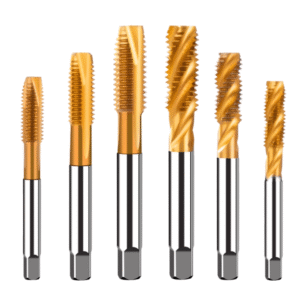
Practical Case Studies and Experience Sharing: From Failure to Improvement
In CNC thread tapping, theoretical methods and process optimization are crucial. However, accumulated experience in actual production is equally indispensable. Analyzing real-world cases allows engineers to identify the root causes of tap breakage and implement practical improvement measures. These cases cover material properties, tool selection, machining parameters, automated equipment commissioning, and process optimization in mass production.
In this section, we leverage thread taps for CNC machines to share examples of stainless steel breakage, experiences with hardened steel machining, and parameter optimization strategies for automated tapping equipment. These insights provide engineers with practical solutions to maintain high-precision threading while minimizing tap breakage and production costs.
Case Study Analysis of Stainless Steel Tap Breakage
During the production of stainless steel parts, conventional HSS taps frequently broke, resulting in increased scrap rates. Analysis revealed the main causes: chip adhesion leading to blockage, excessive cutting temperatures, and insufficient coolant supply.
Improvement measures included:
-
Using spiral flutes or carbide taps to enhance chip evacuation
-
Optimizing coolant type and flow for better heat dissipation
-
Adjusting spindle speed and feed to reduce cutting loads
These changes improved stainless steel tapping stability, extended tap life, and maintained thread accuracy and surface quality. This case highlights the importance of cutting force control, cooling optimization, and tool material selection in preventing tap breakage.
Experience Using Carbide Thread Taps in Hardened Steel
For high-hardness mold steel (HRC 50+), HSS taps often chip or break, reducing productivity. Introducing carbide thread taps significantly improves rigidity and wear resistance, allowing higher cutting forces while minimizing breakage risk.
Practical data shows that, in continuous batch production, carbide taps last approximately 2–3 times longer than HSS taps and provide more consistent thread quality. Combined with optimized coatings and coolant management, tapping efficiency and stability on hard materials are greatly improved, demonstrating the value of high-performance taps.
CNC Automatic Tapping Parameter Optimization for Deep-Hole Threading
On automated CNC lines, tap breakage is often linked to improper cycle settings, inaccurate tap depth control, and suboptimal cutting sequences. Optimizing the program and adjusting the cycle path can greatly reduce breakage.
Practical adjustments include:
-
Adjust tapping cycles based on hole depth and use stepwise tool retraction to reduce cutting load
-
Control cutting temperature by delaying fluid injection and optimizing internal coolant channels
-
Optimize multi-hole tool paths to reduce chip accumulation and radial loads
-
Fine-tune feed and spindle speed to minimize instantaneous torque peaks
Implementing these measures extends tap life, stabilizes thread quality, and maintains high efficiency. Keywords: program optimization, deep-hole thread tapping control, automated thread tapping efficiency.
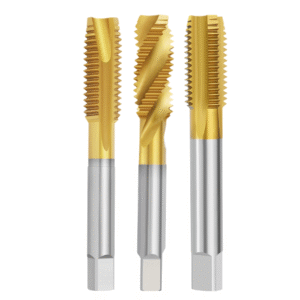
Comprehensively Prevent Tap Breakage, From Tools to Processes
Tap breakage affects production efficiency, thread quality, scrap rates, and tool costs. Achieving precise, stable CNC threading requires comprehensive optimization across tool selection, machining parameters, process flow, and maintenance.
Key strategies:
-
Properly select tap type and material – HSS for ordinary steel and aluminum; carbide taps for hardened steel or stainless steel. Use spiral, straight, or forming taps to optimize chip evacuation.
-
Precisely control CNC parameters and environment – Optimize spindle speed, feed, tapping depth, and cooling/lubrication methods. Use internal coolant, mist systems, or optimized tool exit paths.
-
Use high-precision, high-performance taps – Advanced coatings with precision clamping improve wear resistance, heat tolerance, and thread quality.
-
Implement scientific maintenance and life management – Regularly monitor wear, coatings, and accuracy; establish replacement cycles; analyze tool life data for continuous optimization.
In summary, efficient, precise, and stable tapping starts with proper tool selection and professional process control. Optimizing materials, structure, parameters, processes, and maintenance maximizes tap life, reduces breakage, and ensures high-quality, efficient CNC thread machining.



